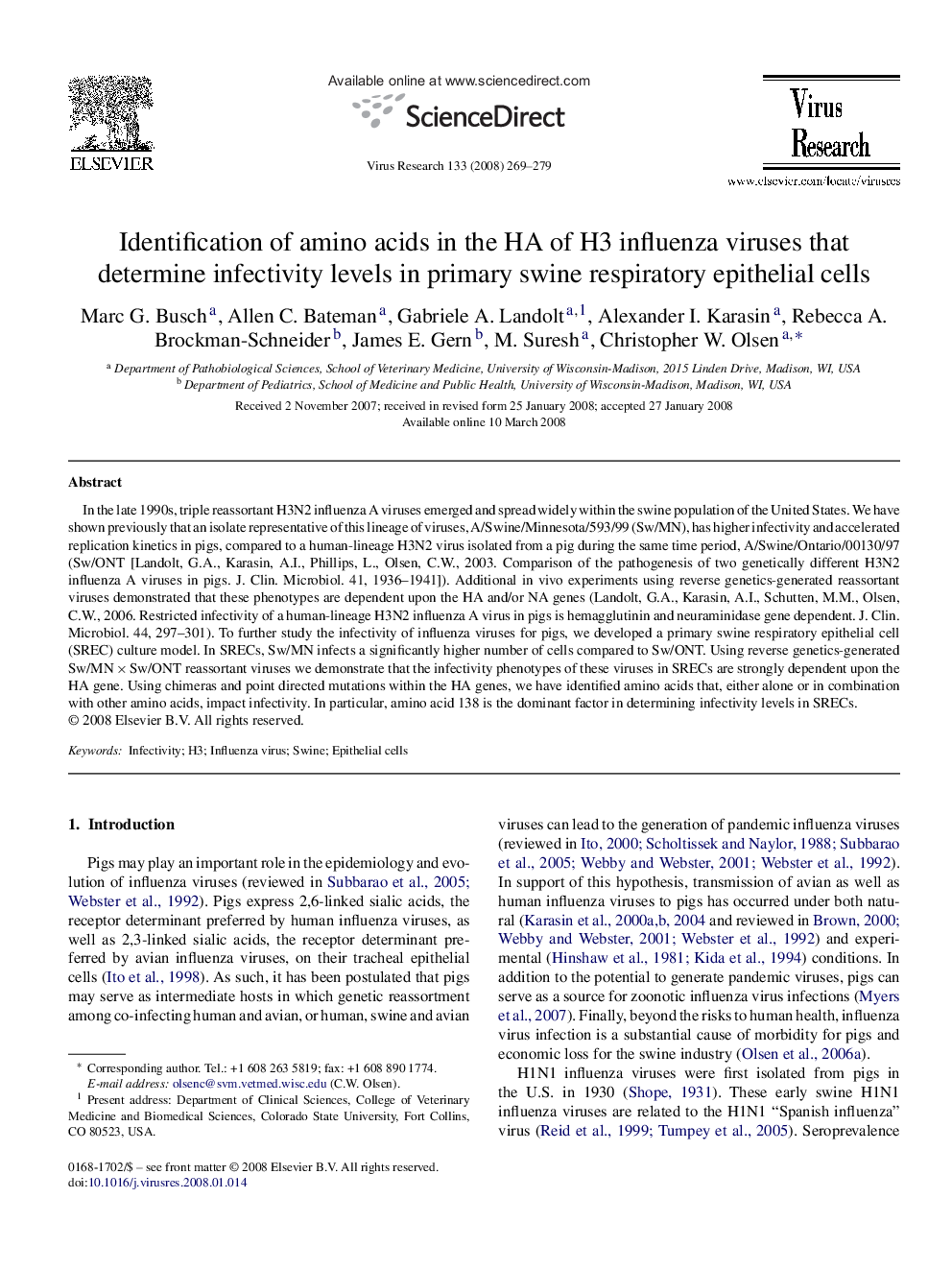| Article ID | Journal | Published Year | Pages | File Type |
|---|---|---|---|---|
| 3430368 | Virus Research | 2008 | 11 Pages |
In the late 1990s, triple reassortant H3N2 influenza A viruses emerged and spread widely within the swine population of the United States. We have shown previously that an isolate representative of this lineage of viruses, A/Swine/Minnesota/593/99 (Sw/MN), has higher infectivity and accelerated replication kinetics in pigs, compared to a human-lineage H3N2 virus isolated from a pig during the same time period, A/Swine/Ontario/00130/97 (Sw/ONT [Landolt, G.A., Karasin, A.I., Phillips, L., Olsen, C.W., 2003. Comparison of the pathogenesis of two genetically different H3N2 influenza A viruses in pigs. J. Clin. Microbiol. 41, 1936–1941]). Additional in vivo experiments using reverse genetics-generated reassortant viruses demonstrated that these phenotypes are dependent upon the HA and/or NA genes (Landolt, G.A., Karasin, A.I., Schutten, M.M., Olsen, C.W., 2006. Restricted infectivity of a human-lineage H3N2 influenza A virus in pigs is hemagglutinin and neuraminidase gene dependent. J. Clin. Microbiol. 44, 297–301). To further study the infectivity of influenza viruses for pigs, we developed a primary swine respiratory epithelial cell (SREC) culture model. In SRECs, Sw/MN infects a significantly higher number of cells compared to Sw/ONT. Using reverse genetics-generated Sw/MN × Sw/ONT reassortant viruses we demonstrate that the infectivity phenotypes of these viruses in SRECs are strongly dependent upon the HA gene. Using chimeras and point directed mutations within the HA genes, we have identified amino acids that, either alone or in combination with other amino acids, impact infectivity. In particular, amino acid 138 is the dominant factor in determining infectivity levels in SRECs.
